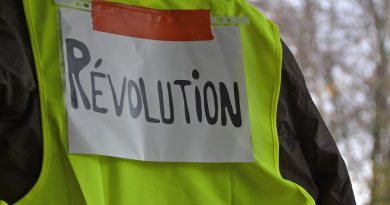Nigeria’s Flood Crisis Exposes Weak Infrastructure
Nigeria’s Flood Crisis Exposes Weak Infrastructure
Aidan Ishaan Raman Bogan
Staff Writer
In a recent tide of violent weather, the Federal Republic of Nigeria has suffered greatly from destructive flooding as millions of people now struggle to sustain themselves. The city of Maiduguri, with its population of 2 million, stands as the greatest victim of the flooding as 1,000 people were killed while half a million residents were forcibly displaced by the damages to homes, hospitals, and public spaces.
The devastation of the flooding and the lackluster response from local and federal government officials have drawn into question the effectiveness of national agencies in ensuring safe and secure water management in the country. The severity of the flood has also become a center of analysis for researchers of climate change as noted by Inside Climate News. It can be seen how the recent flooding in Nigeria has exposed numerous issues in the functions of the Nigerian state, as well as the growing pressure that tumultuous climate conditions are having on this region of Africa.
A focal point of the damages, which would further compound the impact of the flooding in Nigeria, is the state of dam and water control infrastructure. The New York Times states that the Alau Dam in the northeastern Borno State- operates since 1986- was noted to be broken and no longer able to hold back the reservoir. With the sudden increase of heavy rainfall, the dam was overwhelmed by the rising waters, causing an unexpected surge to send water into Maiduguri and the rest of Borno State on September 10, 2024. The quality of the dam and the measures that could have been undertaken have entered discourse, as civil engineer Mala Gutti reportedly stated that the dam had already been in extremely poor upkeep and quality as much as eight months before the collapse.
The lack of upkeep of the dam has placed pressure on local government officials, such as Alhaji Bukar Tijani, who had failed to act accordingly regarding its maintenance during the previous Summer of drought. While attempts have been made now by national agencies to support the displaced people of the area and rebuild broken infrastructure, many Nigerians see these actions as an inadequate response to a crisis that could have been prevented through proper management and attention.
The true scope of the damages brought upon the Nigerian population remains a developing story, as many people have been forced to flee from their residence. Nigeria’s National Emergency Management Agency (NEMA) has attempted to conduct surveys of Borno State. The Human Angle describes that, “The official narrative provided by NEMA was that nearly half of Maiduguri was buried in disastrous flooding after the Alau Dam, a critical infrastructure designed to regulate water flow and provide irrigation and drinking water, overflowed following heavy rainfall. In no time, floodwaters swept through over 23,000 neighborhoods, drowning the city under its force.”
While the large city of Maiduguri was the primary target of damage and recipient of public attention, the largely agricultural surrounding region has also suffered, with minimal support or access to appropriate healthcare services. Premium Times details that the devastation rural Nigerians have had to survive has been compared to the violent activities of Boko Haram, as displacement is among the greatest impacts caused by their reprisals. Since this region of Nigeria has historically suffered from sudden displacement, the further impact of the flooding has only compounded the preexisting social issues of Borno State.
Looking toward the future, efforts are being made to mend the damages caused by the flooding and displacement in Nigeria. According to the United Nations High Commissioner for Refugees (UNHCR),“UNHCR and its humanitarian partners are working tirelessly to provide life-saving relief to those who lost their homes in the floods. UNHCR is providing tarpaulins, blankets, sleeping mats, mosquito nets and other essential items. Emergency cash assistance is also being provided to single-parent families, people with disabilities and families with young children to help them purchase food and other necessities.” Humanitarian aid to Nigeria has remained steady as the UNHCR seeks further funds to facilitate the distribution of vital resources to vulnerable civilians.
While the immediate relief efforts have greatly reduced the continued lack of access to appropriate housing, medical care, or nutritional infrastructure, the underlying issues that caused the dam to collapse remain under scrutiny. News Agency of Nigeria notes that actions are being taken to ensure that the dam infrastructure in surrounding Nigerian states is strong enough to prevent a collapse like the one seen in Maiduguri. Deputy Director of Dams and Reservoir Operations, Oluwatosin Abiola, is working with officials in Sokoto State to assess local dam infrastructure. With proactive measures such as these, it is posited that future heavy rains in Nigeria will not be enough to overwhelm the damn infrastructure of the country.
Image courtesy of Getty Images


